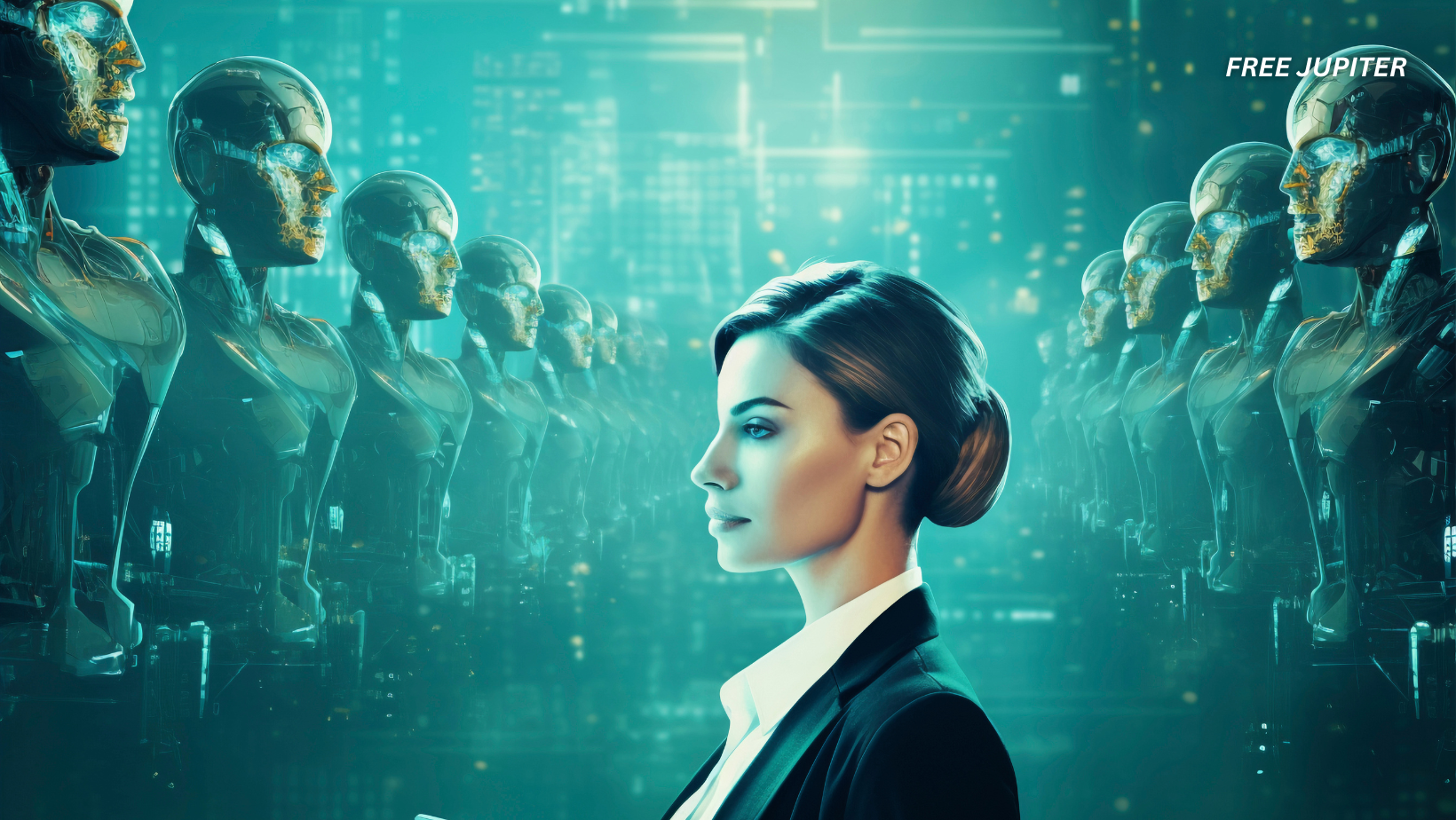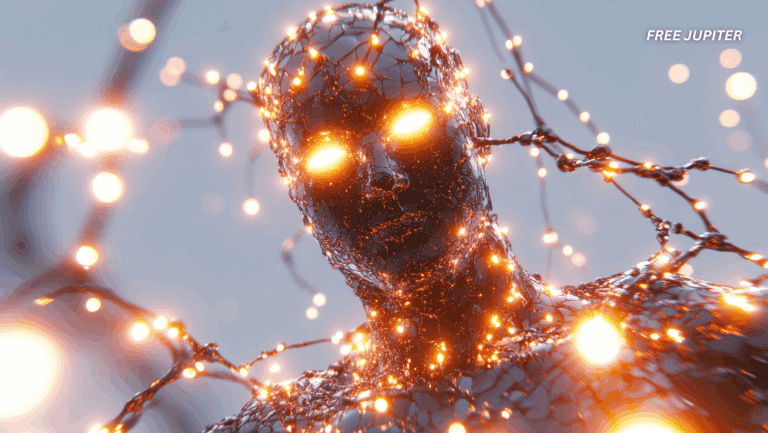Artificial intelligence is no longer a sci-fi dream or a flashy tech demo. It has seeped into everyday life—generating images, answering customer questions, writing marketing copy, even reviewing contracts. It’s fast, it’s scalable, and for many tasks, it’s shockingly competent. Some of the world’s largest companies could, in theory, replace thousands—if not millions—of human workers with AI right now.
Contrary to what some might assume, the delay isn’t because the technology needs more time to mature. AI is already capable of performing many jobs with impressive efficiency. The real reason is far more human: fear. Not fear of AI taking over the world in some apocalyptic Hollywood fashion—but fear of being the first to openly make the call to replace people with machines.
The Corporate Waiting Game
Behind closed doors, CEOs know what AI can do. But many are playing a strategic waiting game. No one wants to be the headline: “Company Fires Thousands, Hires Robots”. The optics are terrible. Politicians from both the left and the right would almost certainly condemn it. Public trust could evaporate overnight.
This is why many corporate leaders are hanging back, hoping one of their competitors will make the first move. Once that happens—and the political and public fallout is clear—they’ll know how to follow suit with less risk. Until then, it’s a slow dance of hesitation, whispered boardroom discussions, and subtle shifts in hiring strategy.
A Generational Split in Perception
When it comes to AI’s impact on jobs, conversations reveal a striking generational divide:
- Under 35: Many see AI displacement as a right now problem. They’re watching automation creep into entry-level positions, internships, and freelance gigs. They’ve grown up with rapid technological change, so the idea of a sudden shift feels entirely plausible.
- Over 35: This group tends to think the big wave of job loss is still five to ten years away. They acknowledge it’s coming, but believe there’s a buffer period before it truly reshapes the workforce.
The trouble is, the younger group is probably closer to the truth. AI is already disrupting the labor market—it’s just happening quietly enough that many people haven’t noticed the scale yet.
Read more: Scientists Stunned as AI System Uncovers Never-Before-Seen Physics
CEOs Speaking in Code
Some executives are more open than others about what’s coming. Take Alex Karp, CEO of Palantir Technologies, who told CNBC that his company plans to grow revenue while decreasing headcount. He didn’t explicitly say “AI will replace people,” but the implication was there. His target is 10 times the revenue with about 500 fewer employees—a hint that certain roles have already been earmarked for automation.
Amazon is another telling example. It operates over one million robots across its warehouses, each with names like Hercules, Pegasus, and Proteus. CEO Andy Jassy has already warned employees that AI-driven automation will change the shape of the workforce. While some jobs will vanish, others will emerge—but the overall trend points to fewer human workers in certain corporate and operational roles.
The Political Blind Spot
For many CEOs, the biggest deterrent isn’t whether AI can replace people—it’s whether the move will trigger political backlash. And right now, both left-leaning and right-leaning politicians would have an easy rallying cry in “protecting American jobs.”
The irony is that many political leaders still treat this as a future issue. It’s often framed as a challenge for “the next administration” rather than an urgent problem. But the shift is already underway, and waiting could leave millions without adequate safety nets.
The Real Questions No One’s Answering
When AI replaces large chunks of the workforce, the fallout won’t just be about job titles. It will be about people’s livelihoods, healthcare access, and long-term financial security. Key questions remain unanswered:
- What happens to the health insurance of workers who lose jobs mid-career, well before retirement?
- How will younger generations enter the workforce if entry-level jobs vanish?
- What retraining programs can realistically help millions of displaced workers transition into new roles?
- How will industries that rely on human empathy, creativity, or physical presence adapt to coexist with AI systems?
These aren’t distant hypotheticals—they’re pressing concerns that, so far, few policymakers have addressed in concrete terms.
The Quiet Revolution: Hiring Freezes
Instead of massive layoffs, many companies are taking a subtler route: they simply stop hiring for roles AI could handle. Hiring managers are being asked to justify every single human hire. If AI can do the job—at least in part—the request might be denied.
This has already hit younger job seekers especially hard. According to Handshake, a career platform for Gen Z workers, job listings for entry-level corporate roles fell by 15% over the past year. That’s not just a dip—it’s a structural shift. If fewer people are hired now, there will be fewer experienced candidates to move into mid-level roles later.
The Numbers That Tell the Story
The outplacement firm Challenger, Gray & Christmas recently ranked AI as one of the top five reasons for job losses this year. Since January, U.S. companies have announced over 806,000 private-sector job cuts—the highest for this period since 2020. The tech sector, unsurprisingly, leads the pack.
For anyone thinking this is still far away, the data says otherwise. The “future of work” isn’t just on the horizon—it’s already knocking on the door.
Read more: Google Claims That AI Will Surpass Human Intelligence By 2030, Posing Extinction Risk
History Is Repeating Itself—Only Faster
This isn’t the first time technology has reshaped the job market. The Industrial Revolution automated manual labor. The introduction of personal computers in offices made typists and certain clerical roles obsolete. But here’s the key difference: those shifts took years or even decades to fully play out.
AI is moving much faster. Thanks to cloud computing, global connectivity, and rapid software deployment, a tool developed today can be rolled out to millions of users tomorrow. A single breakthrough can cause ripple effects across industries in months, not years.
The Human Element CEOs Can’t Ignore
Despite AI’s impressive abilities, replacing humans entirely is more complicated than swapping out a machine part. Humans bring qualities that AI still can’t fully replicate—like emotional intelligence, moral judgment, and the ability to navigate ambiguous social situations.
But even this isn’t a perfect shield. Many jobs rely on a mix of human and technical skills, and if AI can handle 70% of a role’s responsibilities, the economics start to favor automation. The remaining 30% can be redistributed to fewer people.
The Tipping Point Is Coming
Right now, most CEOs are playing defense, waiting for someone else to trigger the first high-profile wave of AI-driven layoffs. But at some point, a major company will decide the cost savings outweigh the risks. When that happens, the hesitation dam could break—and others will rush to follow.
That’s why the more important conversation isn’t whether AI will take jobs—it’s how society will handle it when it does. Will displaced workers have access to universal basic income? Retraining programs? Job guarantees in emerging industries? Or will millions be left scrambling, with little support, in a job market reshaped almost overnight?
Read more: Artificial Intelligence Can Now Replicate Itself—And It Has Experts Terrified
Preparing for the Shift
Workers can’t control when or how companies adopt AI, but they can take steps to prepare. Developing skills in areas where human strengths are still essential—like complex problem-solving, cross-cultural communication, creative strategy, and ethical decision-making—may help create a buffer.
Governments and institutions, meanwhile, need to speed up their planning. By the time AI layoffs make front-page news, it may already be too late to implement effective protections.










